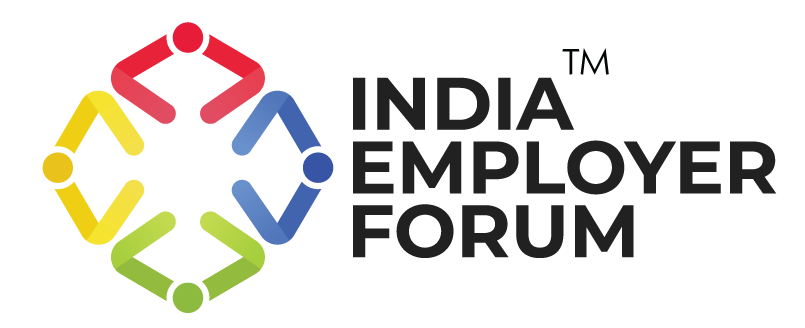Hiring with intent is more than filling an empty chair; it’s about deliberately seeking individuals whose values, goals, and motivations align with your organisation’s future. Yet in reality, most leadership teams still wait until a vacancy is already hurting performance before they act. Markets don’t wait. Competitors don’t wait. But hiring is still too often buried deep in the organization chart, disconnected from strategy.
In 2025, leaders can’t outsource intent. This is where strategic recruitment comes in. It’s a forward-thinking approach that aligns hiring with long-term business goals, identifies the skills and cultural traits needed not just today but for where the company is headed.
Companies that consistently attract top-tier talent aren’t just lucky; they’ve embedded intent into every step of their hiring process. In this blog, we’ll explore how leaders can own the talent agenda, why “hiring with intent” is a competitive advantage in 2025, and the practical steps to shift recruitment from a reactive process to a strategic growth engine.
Talent is the New Strategic Currency
India’s CEOs are feeling the heat as 70% list talent scarcity as a top growth risk alongside cyber threats and cost-of-living pressures (KPMG India CEO Outlook 2024). And while remote hiring has opened up new markets, it’s also intensified competition, as your next great hire could be poached by a competitor anywhere in the world. Talent isn’t just an HR issue; it’s a business survival issue. Leaders at every level are asking the same questions: Do we have the right people to grow? Can we find them before competitors do? How do we keep our best talent from leaving?. The world of work has changed. Customers, teams, and opportunities are now global. Remote and hybrid work mean you can hire from anywhere, but your competitors can too.
At the same time, top talent is under pressure. Always online, stretched thin, and balancing heavy workloads, burnout is a real risk. Even as hiring slows in some sectors, attrition remains a costly challenge: in 2024, India Inc’s average attrition was 17.4%, with IT at 15.1% and ITeS at 10.8% (Economic Times). In some high-churn industries like e-commerce, attrition can spike above 28%. Losing even a few key people can set back growth, delay projects, and open the door for competitors. The lesson is simple: in 2025, the companies that win will be the ones that hire, grow, and keep their talent with intent because, without the right people, no strategy works.
Intentional Hiring = Long-Term Business Foresight
Most leaders continue to hire for today’s org chart. But the smart ones? They hire for where they want the business to be in three to five years. Intentional hiring is about building a team that will be ready for tomorrow’s opportunities and challenges.
This requires foresight. That means:
- Understanding your industry by staying close to trends, competitors, and changes in the market.
- Anticipating customer needs before they even voice them, by listening to feedback, tracking behaviours, and watching the market.
- Keeping pace with technology so you’re not playing catch-up when tools and platforms change the game.
- Regularly assessing your strengths and weaknesses to spot gaps and opportunities.
- Planning for multiple scenarios so you can pivot quickly when the unexpected happens.
Examples:
- Moving into AI-powered BFSI? Start building AI ethics and compliance teams now, not after a regulation crisis.
- Use predictive hiring dashboards to track future skills, not just current vacancies, shifting hiring from reactive to proactive.
This shift from reactive hiring to strategic, future-focused hiring is what separates companies that scramble to survive from those that shape the future of their industry.
Skills-First Hiring, Not Resume-First
When leaders actively engage in the hiring process, they have the power to redefine what “qualified” really means. A skills-first mindset shifts focus from titles, degrees, and perfect resumes to what people can actually do and how quickly they can adapt. Globally, 80% of CEOs, including those in India, say investing in skills development is critical to overcoming talent shortages (KPMG). The impact is tangible: Wipro trained 87,000 employees in generative AI, reducing attrition to 15% and strengthening its leadership pipeline. By prioritizing skills over credentials, companies open doors to non-traditional talent pools, accelerate reskilling in fast-changing markets, and break down barriers that limit diversity, moving away from competing for the same narrow talent pool and towards unlocking hidden potential.
The Silent Cost of Leadership Absence and the Power of Culture-by-Design
When leaders stay distant from hiring, they silently leak value. High-potential candidates drop out when they never feel leadership’s presence. Roles get filled, but with mismatched hires who dilute culture and slow growth. Employer brand damage creeps in quietly in Glassdoor reviews, in industry chatter, in the way people describe “what it’s like to work there.”
The truth is stark: if leaders don’t own hiring, they outsource culture decisions to chance.
Strong companies don’t leave culture to chance; they design it into the hiring process. This means leaders asking intentional, values-based questions, leading culture-focused interviews, and personally engaging with new hires during onboarding. When culture is coded into recruitment, every hire reinforces the company’s DNA instead of weakening it. At scale, this prevents costly misalignment and first-year attrition, turning hiring from a reactive process into a strategic force for growth.
Hiring as a Competitive Moat – From Reactive to Predictive People Supply Chains
The most forward-thinking companies treat hiring like market share capture. They don’t just wait for skills to become scarce; they build scarce-skill hubs in advance of industry shifts. They use their employer brand as a pre-emptive strike, attracting talent not just for the job, but for the chance to work under visionary leaders shaping the future.
This is where talent strategy borrows from supply chain thinking. In a reactive model, you “order after stock-out,” scrambling to fill roles only after a vacancy disrupts workflow. In a predictive model, you “reorder before the demand spike”, anticipating needs and securing talent ahead of time.
Leaders own this shift by mapping future skills, forging partnerships with universities, accelerators, and niche recruiters, and investing in upskilling long before those skills hit crisis-level demand. The result? A workforce pipeline that’s resilient, ready, and a genuine competitive moat, one that competitors can’t easily replicate.
Conclusion: Hiring with Purpose
In the end, leadership’s presence in hiring is a competitive advantage. When leaders show up in the talent process, employees feel chosen, not merely placed. That single shift transforms the relationship from transactional to committed.
In 2025, retention is no longer just about perks or pay; it’s about trust, connection, and visible intent from the top. Purposeful hiring sets the tone for purposeful careers, and the loyalty, innovation, and advocacy that follow become the true return on that investment.






